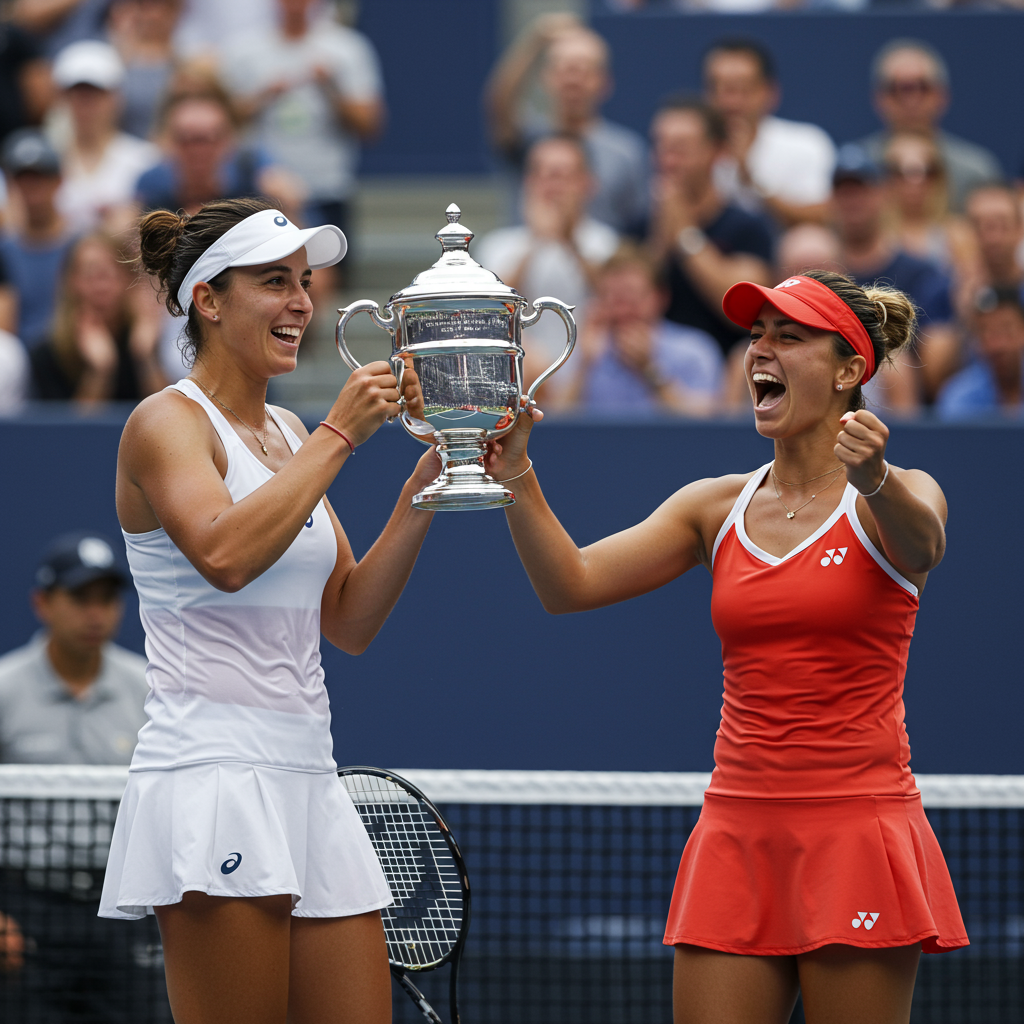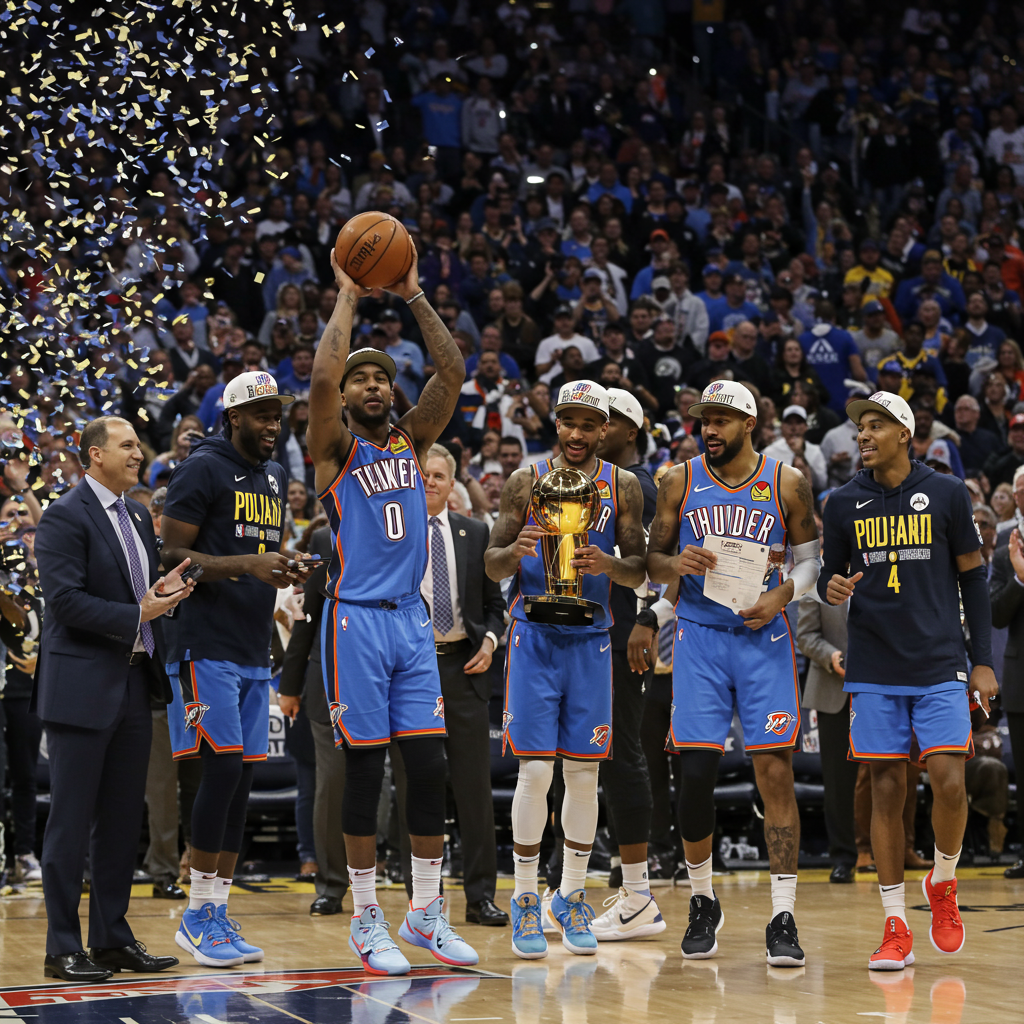The 2025 US Open mixed doubles championship culminated in a thrilling display of tactical prowess and resilience, as defending champions Sara Errani and Andrea Vavassori of Italy clinched their second consecutive title. They defeated the formidable third-seeded pairing of singles superstars Iga Swiatek and Casper Ruud with a hard-fought 6-3, 5-7, (10-6) victory in a packed Arthur Ashe Stadium. This triumph marked a significant moment for dedicated doubles players, as Errani and Vavassori navigated a controversial and “reimagined” tournament format to prove their unparalleled skill.
Their win was not merely a repeat performance; it was a powerful statement. The Italian duo, often described as “mixed doubles specialists,” entered the event with a clear mission: to validate the worth and supremacy of true doubles players on a stage increasingly designed for singles stars. They became the first repeat mixed doubles champions in Flushing Meadows since Bethanie Mattek-Sands and Jamie Murray in 2018-19, adding a third major title to their partnership after also winning the French Open earlier in 2025.
A “Reimagined” Tournament Sparks Debate
The 2025 US Open mixed doubles event was anything but traditional. Organizers had drastically overhauled the competition, aiming to revitalize it and attract top singles talent by offering a staggering $1 million prize pot—a fivefold increase from the previous year’s $200,000. These changes included moving the event to the qualifying week, shortening early-round sets to four games, eliminating advantage scoring, and replacing a full third set with a 10-point match tiebreak. The field was also halved to 16 teams, with direct entry heavily favoring combined singles rankings, effectively marginalizing most doubles specialists.
This “reimagination” generated significant debate and even outrage among many dedicated doubles players. Errani and Vavassori, despite being defending champions, initially faced uncertainty regarding their participation due to their lower combined singles rankings. They were eventually granted one of the precious wildcards, becoming the only recognized doubles pairing in the entire draw. Errani candidly criticized the new format as “dishonest,” drawing an analogy to an Olympic high jump competition excluding actual high jumpers in favor of basketball players, arguing it devalued the sport and sidelined dedicated professionals.
The Path to Glory: Overcoming Star Power
From the outset, Errani and Vavassori embraced their role as representatives for their ostracized peers. Vavassori publicly stated they were competing on behalf of those sidelined by the new format. Their journey to the final showcased their tactical brilliance and seamless teamwork. They blazed through earlier rounds without dropping a set, including a dominant 4-2, 4-2 semifinal victory over Americans Danielle Collins and Christian Harrison, where Vavassori’s serves were particularly potent, and the Italians lost no points on their serve in the first set.
Their final opponents, Iga Swiatek, a six-time Grand Slam singles champion, and Casper Ruud, a three-time major singles finalist, represented the very best of the singles world. Swiatek and Ruud had their own impressive run, staging a remarkable comeback in their semifinal against top-seeded Jessica Pegula and Jack Draper, rallying from a set down and an 8-4 deficit in the deciding tiebreak to win six straight points. This demonstrated their determination, even as they juggled mixed doubles with their primary focus on singles.
A Battle of Strategies: Doubles vs. Singles
The final match was a captivating clash of styles. Vavassori and Errani started strong, establishing a 4-1 lead in the opening set. Despite a brief comeback attempt from Swiatek and Ruud, the Italians quickly regained control, winning seven consecutive points to close out the first set decisively. The second set proved more challenging. Vavassori required a medical timeout for his left thigh, and while this seemed to briefly revitalize the team, Swiatek and Ruud staged a late comeback, breaking Errani’s serve to force a decisive tiebreak.
However, in the match tiebreak, the seasoned doubles duo asserted their superiority. They quickly built a 4-2 lead, leveraging Vavassori’s height and constant net movement, which made him an incredibly difficult target even for accurate ball strikers like Swiatek and Ruud. Errani’s experience and strategic play complemented Vavassori’s aggressive net presence perfectly. Their ability to read the game, execute complex formations, and maintain relentless pressure at the net proved too much for the baseline-focused singles players. As Errani stated, “In doubles it’s not just serving good, hitting good, returning good. There are many other things that are not easy.”
After the final, even Iga Swiatek graciously conceded, “I guess you proved doubles players are smarter tactically than singles players.” This acknowledgement underscored the Italian pair’s core argument: true doubles proficiency involves a unique blend of teamwork, strategy, and net play that transcends singles-focused power.
An Event That Dazzled and Debated
Despite initial controversy, the revamped tournament succeeded in generating significant interest. The late-night final in Arthur Ashe Stadium was packed with an energetic crowd, including high-profile attendees like fashion icon Anna Wintour. Thousands remained until almost midnight, cheering on the finalists. The event featured lively elements like DJs, “Celeb Cam,” and “Dance Cam,” transforming what had become a “footnote” in previous years into a dynamic spectacle. Even Casper Ruud thanked the USTA for “going a little bold and trying this out,” remarking on the unusual sight of a full stadium at midnight on a Wednesday.
While some purists debated whether the shortened format and restrictive entry criteria qualified the event as a true Grand Slam title, or merely an exhibition, the high-quality tennis, particularly in the later stages, demonstrated the serious intent of the players. The presence of a VAR-style check on a shot in the semifinals highlighted the competitive intensity. The event also reaffirmed tennis’s unique ability to showcase top male and female players sharing the stage, demonstrating that female players are fully capable of making decisive plays against their male counterparts.
The success in drawing marquee players and maintaining audience engagement suggests that this “transformative tournament” format is “destined to stay in the coming years.” For Errani and Vavassori, the victory was sweet, not only for the substantial $1 million prize money, but for reaffirming the vital role of doubles specialists in the sport. Errani dedicated the win to “doubles players who couldn’t play this tournament,” while Vavassori declared, “We showed that doubles is a great product.” Their victory highlighted that sometimes, true expertise in a specialized discipline will always find a way to triumph, regardless of the format.
Frequently Asked Questions
What were the major changes to the 2025 US Open mixed doubles format?
The 2025 US Open introduced significant changes to its mixed doubles tournament to attract top singles players and increase fan engagement. Key modifications included a substantial increase in prize money to $1 million for the champions, moving the event to the qualifying week, and a condensed 16-team field. Scoring was also revamped: early rounds featured shortened sets to four games with no-ad scoring, and a 10-point match tiebreak replaced a full third set. For the final, traditional six-game sets were reinstated, but the 10-point tiebreak remained for a deciding set.
How did Sara Errani and Andrea Vavassori win the 2025 US Open mixed doubles title despite format challenges?
Sara Errani and Andrea Vavassori, defending champions and recognized doubles specialists, secured their second consecutive US Open mixed doubles title by leveraging their superior tactical play and teamwork. Despite the revamped format favoring singles players and initially jeopardizing their entry (they received a wildcard), the Italian duo consistently outmaneuvered opponents with sharp net play, strategic formations, and precise volleys. Their final victory over singles stars Iga Swiatek and Casper Ruud showcased their specialized skills, proving that doubles expertise can overcome raw power.
Did the revamped US Open mixed doubles tournament achieve its goals?
Yes, the revamped 2025 US Open mixed doubles tournament largely achieved its goals of increased visibility and engagement. The significant prize money successfully lured top singles players like Carlos Alcaraz, Novak Djokovic, and Iga Swiatek, drawing larger crowds and generating more media attention than previous years. The event created an energetic atmosphere, culminating in a packed Arthur Ashe Stadium for the final. While critics debated its legitimacy as a Grand Slam due to format changes, the overall reception from players and fans, combined with high-quality competitive matches, indicates the experiment was a success likely to influence future tournaments.



